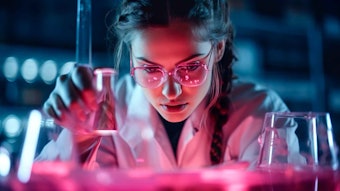Based on previously published studies and consumer articles, it appears that consumer interest in natural and organic products is growing. The question is: What does this mean? Are consumers actually interested in products that contain natural materials, or are they really interested in products that are safer and whose production or use have a minimal impact on the planet (i.e., they are renewable)? The key to meeting consumer demand is to understand what natural means in order to produce formulations that meet expectations.
Since the cosmetics and personal care industry is not regulated, various organizations have offered conflicting positions on standardized guidelines for natural and organic claims. To improve communication on this topic, it will therefore become important to dissociate claims regarding the naturalness of ingredients from the perception of safety.
Safety is inherent in the raw materials used for formulating, regardless of their origin and in the synergies among ingredients—for more than 50 years, the industry has worked hard to monitor the safety of products on the market, supported by the US Food and Drug Administration (FDA). And recently, more governmental agencies such as the FDA, the US Department of Agriculture (USDA) and the Council of Europe’s Committee of Experts on Cosmetic Products have taken a proactive role in sorting out the meanings of natural and organic for the cosmetics and personal care industry. Such organizations act as a clearer scientific focal point in deciding what ingredients are safe for use in cosmetic products. In addition, several organizations currently are monitoring the safety of cosmetics and personal care ingredients, such as the Cosmetic Ingredient Review (CIR) panel.
General Formula Standards
As noted, an ever-growing list of organizations with standardized guidelines exists that measures the naturalness of a product formula. The definition for natural in chemicals legislation was introduced in 1981, and in 2000, the Council of Europe’s Committee of Experts on Cosmetic
Products issued guidelines for natural cosmetic products. Only as recently as 2008, however, did the USDA and the European Cosmetic Standards Working Group (COSMOS)1 provide additional guidance for formulating to meet natural claims. Nongovernmental, for-profit organizations offering organic and/or natural certification for cosmetic products include: Quality Assurance International,2 the National Science Foundation,3 ECOCERT,4 OASIS,5 Nature,6 the Soil Association, Guaranteed Organic Certification Agency,7 BDIH,8 the Natural Products Association,9 and Certech10—to name a few. However, organic and natural certifications for cosmetics are not backed by specific legislation, such as in the foods industry.
Formulas 1–5 are examples of natural products on the market, taken from sources of public domain and including estimates of the ingredient percentages used and/or their function in the formula, to provide readers with a starting point for their own formulation work. It is suggested that readers perform a patent search to ensure they are not infringing on any existing and protected technologies. In addition, two supplier-submitted examples of natural formulas are provided, for reader consideration.
Most natural products launched consist of at least 90% naturally derived materials and they omit certain ingredients construed as being unsafe, such as parabens. Cosmetic products meeting organic standards tend to follow USDA food standards, where no chemical fertilizers, herbicides, pesticides or other toxins were used to grow the non-hybridized plant sources from which the raw materials are derived. The most common denominators among formulas that meet claims for natural standards include:
- Ingredients based on environmentally conscious and ecologically sound practices that are socially responsible with regard to the use of resources, and that impart minimum human impact on the environment;
- Water is considered a basic ingredient; therefore, it is not included in the calculation for total percentage of natural or organic ingredients;
- At least 90% of the formula composition, sans water, is based on renewable feedstock and ingredients with neutral carbon footprints;
- Incidental ingredients such as preservatives, chelating agents and antioxidants do not have to be included in the calculation so long as they represent less than 1% of the non-water portion of the composition, and there are no renewable resource alternatives; and
- All raw materials used should represent the best approach to safe exposure to humans; safety measurements are based on scientific studies demonstrating their long-term safety to humans.
In general, the key to formulating natural products is to choose safe and effective raw materials of as natural an origin as possible. Their renewability also should be incorporated into the product development process, to result in the smallest possible negative footprint on the environment. However, for product developers to meet the specific requirements of a given standard, it is important to fully understand the requirements since they can vary as to how the percentage of natural ingredients is calculated, or the degree of modification allowed to a natural source material. This is important because some natural ingredients are either not functionally suitable to create good aesthetics, are not stable, or are not sufficiently pure—odorless and colorless.
Conclusions
The continued market demand for natural products is growing, and while the definition of natural remains an ongoing discussion, there is a definite push toward eliminating classical, “chemical-sounding” ingredients, even if they are proven safe and have little or no impact on the planet. Since the concept of natural and how it is positioned in the marketplace is still a moving target with minimal legal standardization, it will take some time to provide formulators with a clear idea of how to find and utilize the right materials that support this market claim.
Current standards are dependent upon the marketing division within individual companies and their legal department. For now, it is best for formulators to work with their company’s legal, regulatory and marketing groups to agree on how natural will be defined and stay true to the course. Then it will be easier to work with raw material suppliers to document and match to these specification requirements.
Various organizations including those previously listed, whose Web sites may be found in the concluding references to this article, have developed a list of acceptable and unacceptable renewable ingredients that would meet their standards for natural and organic claims. Also, a number of raw material suppliers have published prototype formulations for use as starting points for natural product formulations.
The development of personal care products for this market requires clear communication regarding whether said products will be positioned as natural—meaning either containing natural ingredients or being safer for the environment; organic and thus meeting a set of specified standards; or renewable, referencing low impact on resources in the environment. In addition, such products should outline the source of feedstock from which their ingredients derived, as well as the renewability and greenness of the source; and safety assurance based on reliable, peer-reviewed science and scientific organizations.
The personal care industry must take a leadership role, as it has for the past 50 years with other issues, to control the misleading association of terms such as natural and organic with the consumer’s expectation of implied safety; the industry must continue in its defense of ingredients with established safety. Reproduction of all or part of this article is strictly prohibited.
References
Send e-mail to [email protected].
1. www.cosmos-standard.org
2. www.qai-inc.com
3. www.nsf.gov
4. www.ecocert.com
5. www.oasisseal.org
6. www.natrue.org
7. www.goca.ws/organic-certification
8. www.kontrollierte-naturkosmetik.de/e/bdih.htm
9. www.naturalproductsassoc.org
10. www.certechregistration.com/1_organic_certification.htm










